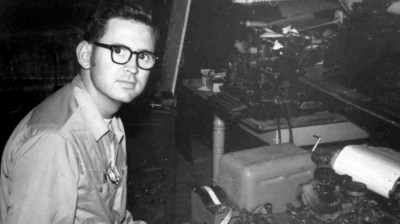These days, nearly everyone communicates through some kind of keyboard, whether they are texting, emailing, or posting on various internet discussion forums. Talking over the phone is almost outmoded at this point. But only a few decades ago, the telephone was king of real-time communication. It was and still is a great invention, but unfortunately the technology left the hearing and speaking-impaired communities on an island of silence.
Engineer and professor Paul Taylor was born deaf in 1939, long before cochlear implants or the existence of laws that called for testing and early identification of hearing impairment in infants. At the age of three, his mother sent him by train to St. Louis to live at a boarding school called the Central Institute for the Deaf (CID).
Here, he was outfitted with a primitive hearing aid and learned to read lips, speak, and use American sign language. At the time, this was the standard plan for deaf and hearing-impaired children — to attend such a school for a decade or so and graduate with the social and academic tools they needed to succeed in public high schools and universities.
After college, Paul became an engineer and in his free time, a champion for the deaf community. He was a pioneer of Telecommunications Devices for the Deaf, better known as TDD or TTY equipment in the US. Later in life, he helped write legislation that became part of the 1990 Americans with Disabilities Act.
Paul was diagnosed with Alzheimer’s in 2017 and died in January of 2021 at the age of 81. He always believed that the more access a deaf person had to technology, the better their life would be, and spent much of his life trying to use technology to improve the deaf experience.
Learning to Speak Without Hearing
Soon after three-year-old Paul started school at CID, he met a little girl named Sally Hewlett who would one day become his wife. Along with their classmates, they spent the next several years learning to speak by holding their hands to the teacher’s face to feel the vibrations of speech, then touching their own faces while mimicking the movement and sound.
Paul’s father died while he was still in school. His mother moved to St. Louis to be with her son so he could still attend, but live at home. She took the opportunity to study at CID and she became an accredited teacher for deaf children. When it was time for high school, Paul and his mother moved to Houston, where she started a school for the deaf, and he enrolled in public school for the first time. Paul had no interpreter, no helper of any kind.
In a 2007 documentary made by the Taylors’ youngest daughter, Paul tells a story about an experience he had in high school. There was a nice looking girl in his class, and he wanted to …read more
Source:: Hackaday

